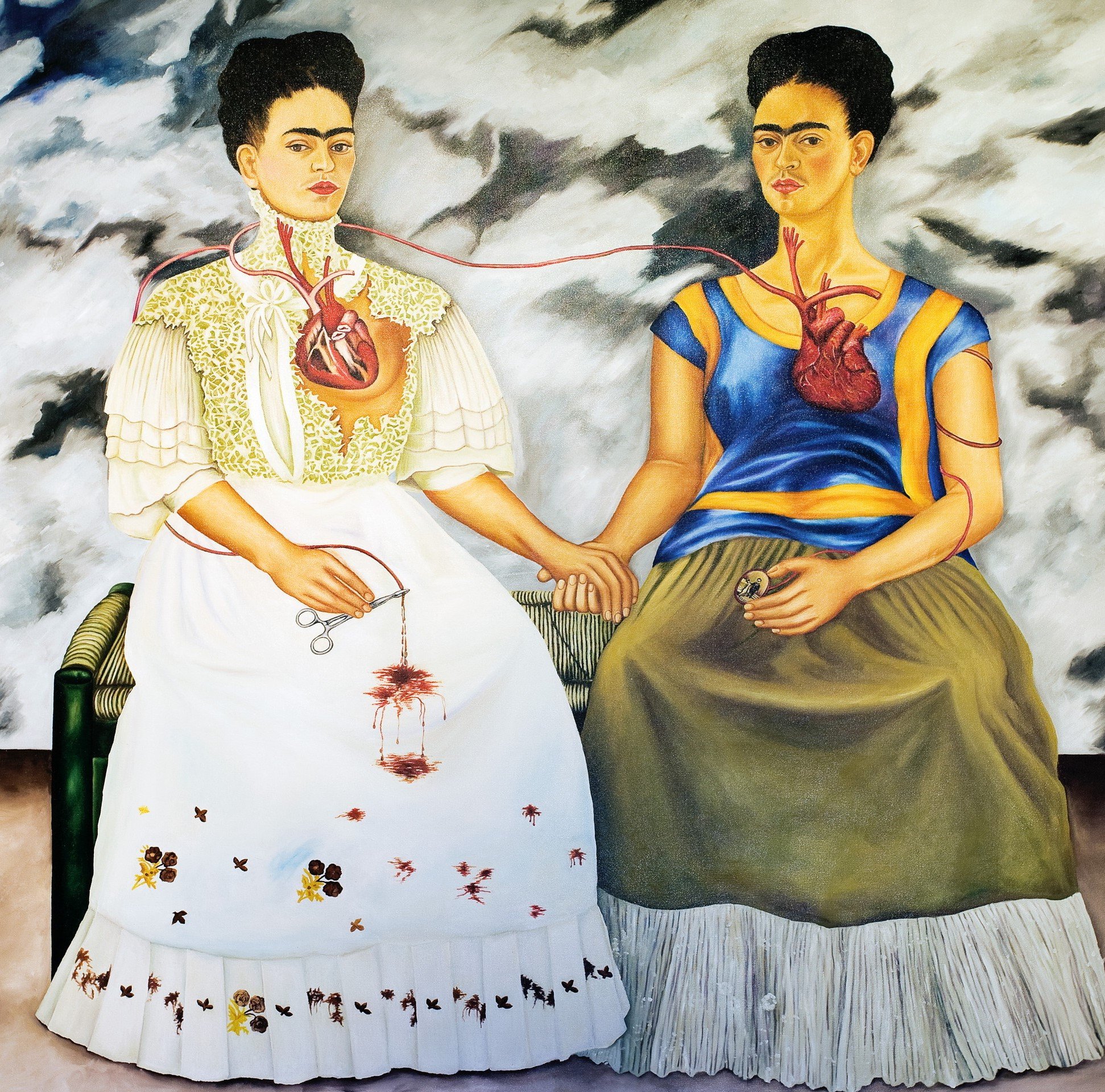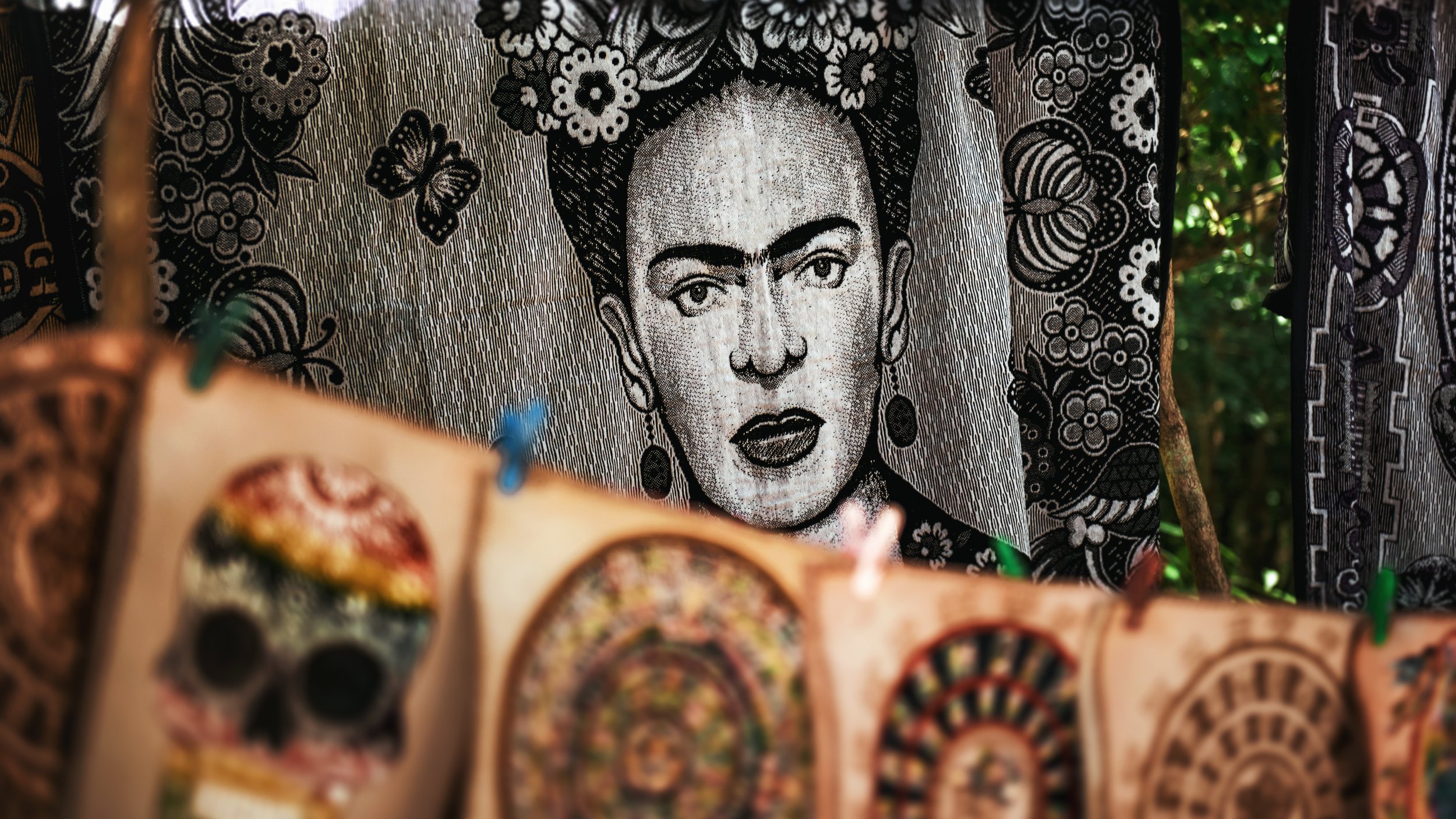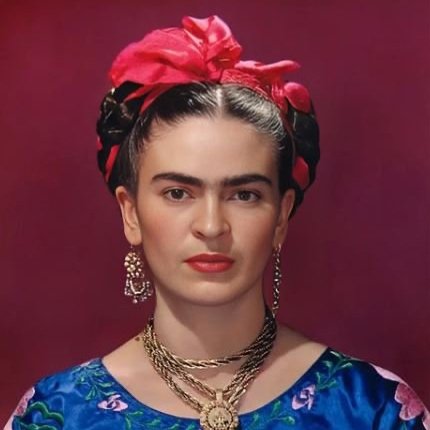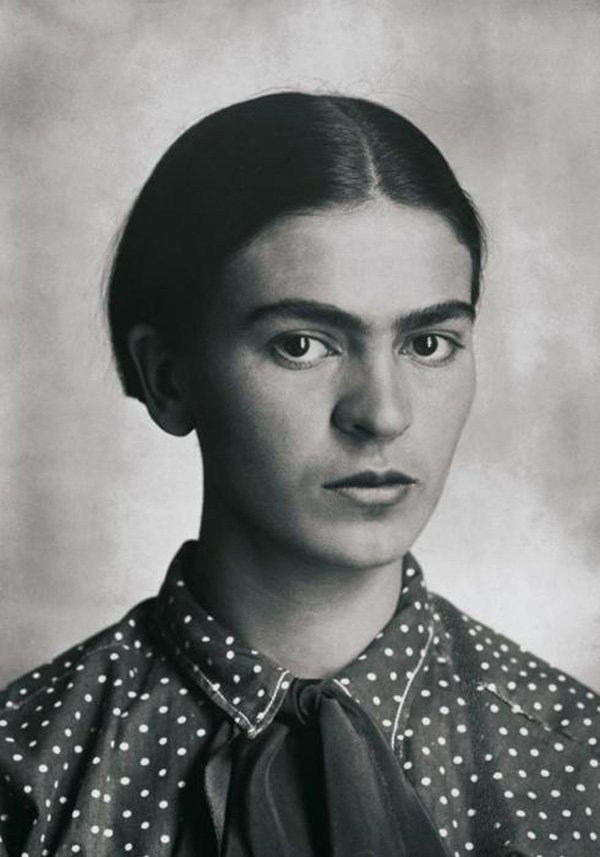What was Frida Kahlo’s Personality Type?
Frida Kahlo was a highly influential Mexican painter known for her vibrant and deeply introspective artworks.
Understanding Frida Kahlo's personality type goes beyond mere curiosity. It allows us to delve deeper into the motivations and inspirations behind her art, providing valuable insights into her creative process and the emotional landscape that fuelled her work.
By exploring her personality type, we gain a richer understanding of her art’s significance and the profound impact she had on the art world and beyond.
Frida Kahlo rose to prominence in the early 20th century, becoming an iconic figure in Mexican art and a symbol of resilience and self-expression. Despite facing numerous physical and emotional challenges throughout her life, Kahlo’s unique artistic style and personal story continue to captivate audiences worldwide.
In this article, I aim to uncover Frida Kahlo's personality type, delving into her life, artwork, and personal relationships. By analysing various aspects of her personality, I reveal the complex and multifaceted nature of her artistic genius and the indelible mark she left on the art world.
I have further articles about Frida Kahlo if you are interested in finding out more.
Table of Contents
Understanding Personality Types
Frida Kahlo’s Relationship with her Father
Analysing Frida Kahlo's Personality Type
Frida Kahlo: Myers-Briggs Type Indicator (MBTI)
Frida Kahlo: Big Five Personality Traits
Personality traits and characteristics that align with her life and work
Understanding Personality Types
Personality types refer to the unique patterns of thoughts, feelings, and behaviours that characterise individuals. They provide a framework for understanding and categorising the diverse range of human personalities.
By identifying someone’s personality type, we can gain insights into their preferences, tendencies, and how they interact with the world.
There are several popular personality typing systems that have been widely used to classify and analyse individuals:
Myers-Briggs Type Indicator (MBTI): Developed by Katharine Briggs and Isabel Myers, the MBTI categorises individuals into sixteen personality types based on four dichotomies: extraversion (E) vs. introversion (I), sensing (S) vs. intuition (N), thinking (T) vs. feeling (F), and judging (J) vs. perceiving (P).
This system provides insights into how individuals perceive and interact with the world.
Big Five Personality Traits: The Big Five model is based on five broad dimensions of personality: openness to experience, conscientiousness, extraversion, agreeableness, and neuroticism. This system focuses on capturing the fundamental aspects of personality that exist on a continuum, allowing for a more nuanced understanding of individual differences.
Enneagram: The Enneagram is a popular system of personality typing that describes nine distinct personality types, each characterised by specific patterns of thoughts, emotions, and behaviours. It provides insights into how individuals perceive the world, cope with challenges, and interact with others.
These personality typing systems serve as useful tools for exploring and analysing an individual’s personality traits, tendencies, and preferences.
Frida Kahlo: A Brief Overview
To understand Frida Kahlo’s personality type it is first important to understand her life experiences.
Kahlo’s life was marked by both triumphs and hardships. Born in Coyoacán, Mexico, in 1907, she showed a passion for art from an early age. However, her life took a dramatic turn when a bus accident in 1925 left her with severe injuries, including a broken spine, pelvis, and multiple fractures. This event had a profound impact on her physical health and mental well-being, as she endured multiple surgeries and a lifetime of chronic pain.
Despite her physical limitations, Kahlo refused to be defined by her injuries. She channelled her pain and emotions into her art, using self-portraiture as a means of self-expression. Her art became a way for her to explore themes of identity, gender, politics, and Mexican culture.
Frida Kahlo’s personality was shaped by a series of significant events and experiences throughout her life. Apart from the bus accident that left her physically impaired, her marriage to renowned Mexican artist Diego Rivera played a significant role in her personal and artistic development. Their relationship was characterised by passionate love, infidelity, and a shared commitment to political activism. The tumultuous nature of their marriage influenced Kahlo’s emotional state and artistic expression.
In addition, Kahlo’s experiences with miscarriages and infertility deeply impacted her sense of self and womanhood. These struggles were reflected in her artwork, often depicting themes of fertility, motherhood, and the pain of loss.
Kahlo’s involvement in the Mexican art scene and her friendships with prominent artists and intellectuals of her time, such as André Breton and Leon Trotsky, also shaped her personality and artistic outlook. Her interactions with these individuals exposed her to different artistic movements and ideas, contributing to her unique artistic style and political beliefs.
Frida Kahlo’s life experiences, including her physical ailments, relationships, and political activism, played a pivotal role in shaping her complex and resilient personality, which is beautifully reflected in her artwork.
Frida Kahlo’s artistic achievements continue to resonate with audiences worldwide. Her unique style blended elements of surrealism, folk art, and symbolism, creating a visual language that was both personal and universal. Kahlo’s self-portraits, characterised by their vivid colours, intricate details, and raw emotional intensity, have become iconic representations of her inner world.
Frida Kahlo’s Relationship with her Father
Frida Kahlo’s father was Guillermo Kahlo, a German-Mexican photographer. He was born Carl Wilhelm Kahlo in Pforzheim, Germany, in 1871. Guillermo moved to Mexico in 1891, where he changed his name to Guillermo and eventually became a naturalised Mexican citizen.
Guillermo Kahlo had a successful career as a photographer and opened his own photography studio in Mexico City. He specialised in architectural photography, capturing images of buildings, churches, and landscapes. He also documented Mexican culture and people, including indigenous communities and daily life in the country.
Frida Kahlo had a close relationship with her father, who supported her artistic aspirations and encouraged her creativity. Guillermo’s influence on Frida can be seen in her early exposure to art and photography, as well as in her use of vivid colours and attention to detail in her paintings.
Tragically, when Frida was a teenager, Guillermo suffered a stroke, which left him partially paralysed. This event had a profound impact on Frida and influenced her understanding of pain, suffering, and resilience, which is reflected in her art.
While Guillermo Kahlo is often overshadowed by his daughter’s fame, his presence in her life and his support for her artistic endeavors played a significant role in shaping Frida Kahlo’s artistic path. His influence can be seen in her early exposure to the arts, her exploration of Mexican culture, and her unique approach to self-expression through her paintings.
Frida Kahlo’s Health Issues
I touched on this above, but Frida Kahlo’s health struggles were a significant part of her life and its impact upon her personality requires further investigation.
One of the notable conditions she experienced was a pulmonary embolism.
A pulmonary embolism occurs when a blood clot (typically from the legs) travels through the bloodstream and lodges in the pulmonary artery, blocking blood flow to the lungs. In Frida Kahlo’s case, her pulmonary embolism was a result of complications from the bus accident she had in her teenage years.
In 1925, at the age of 18, Frida was involved in a severe bus accident. She suffered multiple injuries, including to her right leg and hip, fractures to her spine, collarbone, ribs, and pelvis. The accident left her bedridden for extended periods, and she endured numerous surgeries and medical treatments throughout her life. Following the bus accident, Frida experienced chronic pain and health issues, including respiratory problems.
Despite her physical challenges, she continued to create art and express her emotions through her paintings, often depicting her pain and suffering.
Frida Kahlo’s experience with a pulmonary embolism and its effects on her health added another layer to her complex and often tumultuous life. It influenced her artistic themes and the introspective nature of her work, reflecting her personal struggles, resilience, and determination to create despite her physical limitations.
Analysing Frida Kahlo’s Personality Type
Frida Kahlo’s artistic expression and how it reflects her inner world.
Frida Kahlo’s art was an intimate reflection of her inner world and personal experiences. Through her self-portraits, she laid bare her emotions, pain, and struggles.
Her paintings served as a visual diary, capturing the complexities of her identity.
The vibrant colors, intricate details, and symbolism in her artwork offered a glimpse into the depth of her emotions and her quest for self-understanding.
Frida Kahlo’s personal relationships and interactions with others
Frida Kahlo’s personal relationships played a significant role in her life and art. Her marriage to her husband Diego Rivera, a renowned artist, was marked by love, passion, and turbulence. Kahlo’s art often depicted the complexities of their relationship, including themes of love, infidelity, and emotional dependence. Her paintings explored the intricate dynamics of human connection and the impact of personal relationships on one’s sense of self.
In addition to her romantic relationship, Kahlo had friendships with artists, intellectuals, and political activists of her time.
These relationships provided her with support, artistic inspiration, and intellectual stimulation. Her interactions with individuals such as André Breton and Leon Trotsky shaped her worldview and artistic development.
Frida Kahlo’s unique style, symbolism, and recurring themes in her artwork
Frida Kahlo’s artistic style was characterised by its uniqueness and blend of influences.
She combined elements of surrealism, folk art, and Mexican cultural symbols to create a visual language that was distinctly her own. Her use of vibrant colours, intricate details, and surreal imagery captivated viewers and invited them into her world.
Symbolism played a crucial role in Kahlo’s artwork. She incorporated personal and cultural symbols, such as the Tehuana costume, animals, and plants, to convey deeper meanings and explore themes of identity, mortality, and spirituality. Recurring motifs in her art, such as thorns, broken columns, and flowing tears, reflected her experiences of physical pain, emotional anguish, and resilience.
By analysing Frida Kahlo’s artistic expression, personal relationships, approach to adversity, and recurring themes, we gain valuable insights into her personality type and the profound impact it had on her art and her enduring legacy.
Frida Kahlo: Myers-Briggs Type Indicator (MBTI)
Frida Kahlo’s introspective nature, deep self-reflection, and focus on personal emotions and experiences align with traits often associated with introverted personalities e.g., INFP or INFJ. Her strong sense of individuality, resilience, and commitment to self-expression suggest traits associated with Perceiving (P) types.
Frida Kahlo’s introspective nature was a defining aspect of her personality. She possessed a deep capacity for self-reflection, which is evident in her artworks. Through her self-portraits, Kahlo laid bare her emotions, vulnerabilities, and personal experiences. She used her art as a means of exploring her inner world and making sense of her complex emotions. This inclination towards introspection and self-reflection aligns with the traits commonly associated with introverted personalities.
Frida Kahlo’s resilience and commitment to self-expression also suggests traits associated with Perceiving (P) types. Perceivers are often adaptable, open-minded, and flexible in their approach to life.
Kahlo’s ability to adapt to her physical limitations and find creative solutions in the face of adversity exemplified her resilience. Despite enduring numerous surgeries and experiencing chronic pain, she continued to create art that conveyed her emotions and experiences. Kahlo’s commitment to self-expression and her willingness to embrace unconventional approaches align with the adaptable and flexible nature often seen in Perceivers.
While it is important to note that assigning a specific personality type to Frida Kahlo is speculative, her introspective nature, strong individuality, resilience, and commitment to self-expression suggest traits commonly associated with introverted personalities (e.g., INFP or INFJ) and Perceiving (P) types. Understanding these potential traits provides valuable insights into her artistic process, motivations, and the profound impact of her art on the art world and beyond.
Frida Kahlo: Big Five Personality Traits
Frida Kahlo’s passionate and emotionally intense artworks reflect high levels of openness to experience.
Her persistence and determination in the face of adversity demonstrate conscientiousness and resilience. Using the criteria for Big Five Personality Traits, Kahlo displayed both extraverted and introverted tendencies, suggesting a moderate score on the extraversion scale. Her work often portrayed empathy and compassion, indicating a higher level of agreeableness. Her struggles with physical and emotional pain point towards higher neuroticism scores.
Frida Kahlo’s art is a testament to her high level of openness to experience. Her works are characterised by their vivid colours, intricate details, and surreal imagery, reflecting her willingness to explore new ideas and push artistic boundaries. Her passionate and emotionally intense paintings demonstrate her willingness to delve deep into her own psyche and explore a wide range of emotions.
Kahlo’s persistence and determination in the face of adversity exemplify conscientiousness and resilience. Despite her physical ailments and numerous surgeries, she remained committed to her artistic pursuits. Kahlo’s resilience is further exemplified by her ability to transform her pain and suffering into powerful expressions of art, demonstrating her strength and determination to overcome obstacles.
In terms of extraversion and introversion, Frida Kahlo exhibited traits of both. While she often portrayed herself as a solitary figure in her self-portraits, delving into her inner world, she also had a social side. She maintained friendships and had interactions with other artists and intellectuals, suggesting a moderate score on the extraversion scale.
This blend of extraverted and introverted tendencies showcases the complexity and depth of her personality.
Kahlo’s work often conveyed empathy and compassion, indicating a higher level of agreeableness. Her art frequently explored themes of love, pain, and human connection, inviting viewers to empathise with her experiences. She used her self-portraits to convey her emotions and to express solidarity with marginalised individuals, particularly women. These elements demonstrate her ability to understand and relate to the experiences of others, highlighting her agreeable nature.
Finally, Kahlo’s struggles with physical and emotional pain point towards higher neuroticism scores. Her art is often filled with symbolism depicting her physical ailments, depicting her emotional anguish and internal struggles. Her vulnerability and candid exploration of her own suffering reveal her high sensitivity and emotional depth.
It is important to note that the Big Five Personality Traits are complex and multifaceted, and individuals may exhibit a range of traits across the spectrum.
Frida Kahlo: Enneagram
When considering Frida Kahlo’s personality through the lens of the Enneagram, it is important to note that accurately typing historical figures can be challenging, as we rely on limited information and interpretations of their lives. However, based on available information and analysis, some traits and characteristics of Frida Kahlo align with certain Enneagram types.
Frida Kahlo’s personality and experiences suggest a strong alignment with Enneagram Type Four, often referred to as “The Individualist” or “The Artist”. Type Four individuals are known for their deep emotions, introspection, and a desire for personal authenticity. They often possess a unique sense of self and value their individuality.
Frida’s intense emotions and her ability to express them through her art reflect the emotional depth and sensitivity commonly associated with Type Fours. Her paintings, often depicting her inner struggles, and longing for authenticity, are characteristic of Type Four’s focus on self-expression and the exploration of personal identity.
Furthermore, Type Fours often feel a sense of being different or misunderstood, and they may strive to create a distinct identity separate from societal norms. Frida's strong sense of individuality, her unapologetic portrayal of her physical pain and challenges, and her rejection of traditional beauty standards align with the Type Four’s pursuit of personal authenticity.
Ultimately, the Enneagram is a tool for self-reflection and personal growth, and understanding Frida Kahlo’s potential Enneagram type can provide some insights into her motivations and behaviour’s. However, it is essential to approach such analysis with caution and recognise that it is based on subjective interpretation rather than definitive certainty.
Personality traits and characteristics that align with her life and work
Several personality traits and characteristics align with Frida Kahlo's life and work:
Emotional Intensity: Frida Kahlo’s art was characterised by raw and intense emotions. She openly expressed her pain, love, and anguish, showcasing her emotional depth and sensitivity.
Resilience: Frida Kahlo’s ability to endure physical pain, surgeries, and emotional hardships demonstrated her remarkable resilience. She transformed her pain into artistic expression, defying adversity and finding strength within herself.
Individuality: Frida Kahlo’s unapologetic embrace of her uniqueness and refusal to conform to societal expectations exemplify her strong sense of individuality. She celebrated her own identity, challenged traditional gender roles, and forged her path as an artist.
Introspection and Self-Reflection: Frida Kahlo’s deep introspection and self-reflection were evident in her self-portraits. Her art served as a means of self-discovery and self-expression, inviting viewers to explore the inner workings of her psyche.
Frida Kahlo’s personality type and artistic genius are intricately connected. Her introspective nature, emotional depth, and individuality shaped her unique artistic vision. By delving into her own experiences and emotions, she created a body of work that resonates with audiences on a profound level.
Frida Kahlo’s resilience and ability to transform pain into art showcased her extraordinary capacity for creativity. Her introspective tendencies allowed her to delve deep into her emotions and express them in a visually striking and evocative manner. Her art became a powerful tool for self-discovery and a means of connecting with others on a universal level.
By speculating on Frida Kahlo’s personality type, we gain a deeper appreciation for the connections between her life, her art, and the indelible mark she left on the art world. While it is impossible to definitively assign a specific personality type to Kahlo, exploring potential traits and characteristics allows us to better understand the complex interplay between her personality and her artistic brilliance.
My Final Thoughts
Throughout this article, we have explored the personality of iconic Mexican artist Frida Kahlo. We discussed different personality typing systems, such as the Myers-Briggs Type Indicator (MBTI) and the Big Five Personality Traits, and speculated on how they might apply to Kahlo. We highlighted her introspective nature, deep self-reflection, and focus on personal emotions and experiences, which align with traits associated with introverted personalities. We also examined her openness to experience, persistence, determination, empathy, and resilience, as reflected in her art and her response to adversity.
It is essential to recognise the complexity and uniqueness of Frida Kahlo’s personality. Her multidimensional character defies simplistic categorisations, as she exhibited a blend of traits from different personality typing systems. Kahlo’s personality was shaped by her personal experiences, struggles, and artistic pursuits, resulting in a truly distinctive individual. Her art serves as a testament to the intricacies of her personality, capturing the depth of her emotions, the resilience of her spirit, and the power of her self-expression.
Frida Kahlo’s art continues to resonate with audiences worldwide, transcending time and cultural barriers. Frida Kahlo's unique personality remains an enduring source of fascination and admiration, reminding us of the power of individuality, resilience, and self-expression.
I have further articles about Frida Kahlo if you are interested in finding out more.
I hope you have enjoyed this article, if you have any thoughts or feedback, please feel free to get in contact with me at sarahransomeart@gmail.com.













